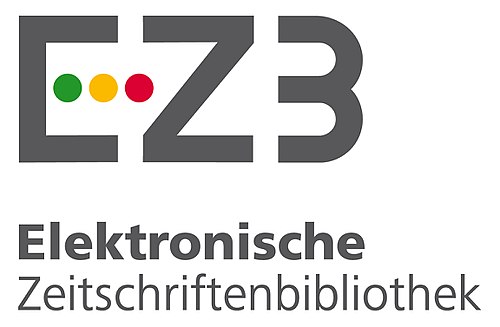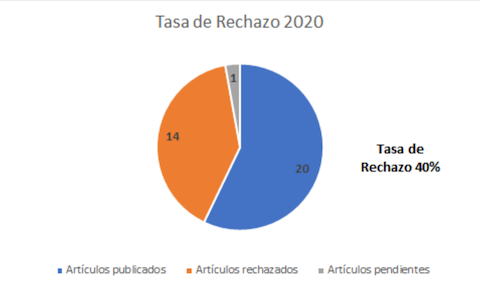Conceptual design of a jetengine injector test bench
DOI:
https://doi.org/10.18667/cienciaypoderaereo.821Keywords:
Test bench, conceptual design, injectors, jet engines, parametersAbstract
Every product development must go through the conceptual design stage, which involves obtaining a partial solution to a problem based on the client’s specifications, requirements, and needs. In the case of a jet engine, the way fuel enters the combustion chamber has a significant impact on its performance. Operational parameters such as spray angle, pressure, and fuel atomization are determining factors that directly influence combustion speed and mixture formation, leading to an alteration in combustion in jet engines. For this reason, injectors play an important role in the fuel injection system. Thus, the maintenance of this component is of great relevance and impact on the engine. The preservation of the injector’s proper functioning is ensured through the use of a test bench, a tool used to maintain this component, during which the injectors are calibrated, evaluated, and parameterized against a model previously established by the manufacturer. Given the above, this article will describe the conceptual design of a test bench for jet engine injectors. As a starting point, the most appropriate methodology is selected, considering the client’s requirements and needs obtained through a survey, to generate concepts evaluated through the house of quality. The final concept is characterized by having a stainless steel structure, an advanced alert system, and an ergonomic design, with high-tech elements that make it the most expensive of the established options.
Downloads
References
Arzola de la Peña, N. (2011). Metodología de diseño para ingeniería. Editorial Universidad Nacional de Colombia.
BARDAHL. (2020). La importancia del inyector. https://tinyurl.com/mt9p47vr
Eltiempo.es (s. f.). Barómetro [en línea]. https://tinyurl.com/3uz2f8vn
Escobar-Garzón, A., Villanueva, N., Peréz, G. y Hernández, T. E. (2007). Diseño y construcción de un banco de pruebas para las boquillas de inyección de combustibles de los motores pw100 y PT6. Ciencia y Poder Aéreo, 2(1), 41-44. https://doi.org/10.18667/cienciaypoderaereo.82
Ferreira-Garzón, R. A., Jurado-Ballesteros, E. R. y AyalaGonzález, J. A. (2008). Diseño de un banco de pruebas para motores PT6T-3 (trabajo de grado, Universidad de San Buenaventura). https://tinyurl.com/2ewpk8aa
Ferrero, A., Huertas, R., Perales, E., Huraibat, K. y SantaféGabarda, P. (s. f.). Medida de la apariencia. E-medida: Revista Española de Metrología [en línea]. https://tinyurl.com/2fmm42w4
Ferros Texar. (s. f.). Acero estructural: ¿qué es y para qué se utiliza? [en línea]. https://tinyurl.com/t9rnwhay
Hernández-Rueda, J. A., Gómez-Lugo, J. H., Gutiérrez-Nieto, D. O., Díaz-Gaviria, J. H. y Casallas-Moreno, E. A. (2007). Banco de prueba de inyectores para motores garrett tpe331-10R-513C y pt6A-25C. Ciencia y Tecnología Aeronáutica [en línea]. https://tinyurl.com/2ys2d4b9
Galmés-Belmonte, B. (2015). Motores de reacción y turbina de gas (2.a ed.). Paraninfo.
Guerrero-Ángeles, V. R. (2016). Banco de montaje para motores a reacción. Universidad Politécnica Metropolitana de Hidalgo.
IQR Ingeniería Química. (2021, marzo 6). Tubo de Pitot: ¿qué es y cómo funciona? [en línea]. https://tinyurl.com/nhxyndsc
KeepCoding. (2021, septiembre 22). Ventajas y desventajas de Python [en línea]. https://tinyurl.com/98y7um6p
Londoño-Gómez, C. D. y Méndez-Tejero, D. A. (2014). Diseño, construcción e implementación de un banco de prueba para la caja de accesorios del motor J-85 del avión A 37-B de la Fuerza Aérea Colombiana (trabajo de grado, Fundación Universitaria Los Libertadores). Repositorio institucional. https://tinyurl.com/yeyms2sn
Mejoras. (s. f.). Hydrins. Caudalímetro de inserción electromagnético para medida de caudal [en línea]. https://tinyurl.com/7x54f84t.
Pérez, J. J. y Moreno, W. L. (2009). Banco de prueba de inyectores para motores PT-6 A/T y PT-6/T-3b. TecnoESUFA.
RACE. (2022, noviembre 16). Problemas con los inyectores: síntomas y fallos [en línea] https://tinyurl.com/yz4a5ujj
Renting Finders. (s. f.). Manómetro [en línea]. https://tinyurl.com/vb92yz9r
Rivas, A. G. (2003). Motores de turbina de gas [en línea]. https://tinyurl.com/2rrvnh6v
Ocaña-Sánchez, C. F. y López-Velasteguí, D. A. (2018). Repotenciación del banco de pruebas para los inyectores del motor PT6 A-68C del avión A-29B Súper Tucano perteneciente al grupo logístico No. 232 de la Fuerza Aérea Ecuatoriana (trabajo de grado, Escuela Superior Politécnica de Chimborazo. Repositorio institucional espoch. https://tinyurl.com/dee8nxua
Servinox. (2014, marzo 14). Hablemos sobre el acero inoxidable [en línea]. https://tinyurl.com/4scf2fed
Silver Automation Instruments. (s. f.). Ventajas y desventajas del medidor de flujo electromagnético [en línea]. https://tinyurl.com/4x7yt25x
SmartMeasurement. (s. f.). Ultrasonic Flow Meters: Revolutionizing Industry Standards [en línea]. https://tinyurl.com/2pj56m4e
Taco-Álvaro, D. (2015, agosto 12). Normas de seguridad de un operador industrial [en línea]. https://tinyurl.com/ya7xh338
Vega-Muñoz, A. (2019). Herramientas para incrementar la Innovación Tecnológica de productos en Latinoamérica. Latin American Journal of International Affairs, 2(1). https://www.lajia.net/lajia/article/view/4
Visure. (s. f.). Qué son los requisitos funcionales: ejemplos, definición, guía completa [en línea]. https://tinyurl.com/mtbpsdem
Downloads
Published
Issue
Section
License
Copyright (c) 2024 Escuela de Postgrados de la Fuerza Aérea Colombiana

This work is licensed under a Creative Commons Attribution 4.0 International License.
Assignment of Copyrights
Authors assign Ciencia y Poder Aéreo journal the exclusive rights (reproduction, distribution, public communication, and transformation) to exploit and commercialize their work, in whole or in part, in all the formats and modalities of present or future exploitation, in all languages, throughout the life of the work and throughout the world.
All contents published in Ciencia y Poder Aéreo journal are licensed under a Creative Commons Attribution 4.0 International License, whose complete information is available at http://creativecommons.org/licenses/by/4.0/
Under the terms of this license, users are free to download, print, extract, archive, distribute and publicly communicate the content of articles, provided that proper credit is granted to authors and Ciencia y Poder Aéreo, scientific journal of the Graduate School of the Colombian Air Force. Except when otherwise indicated, this site and its contents are licensed under a Creative Commons Attribution 4.0 International License.
For other uses not considered under this license it is required to contact the Director or the Editor of the journal at the e-mail address cienciaypoderaereo1@gmail.com.
The Graduate School of the Colombian Air Force and this publication are not responsible for the concepts expressed in the articles, including the metadata or the affiliation stated by authors. This is the full responsibility of the authors.






















